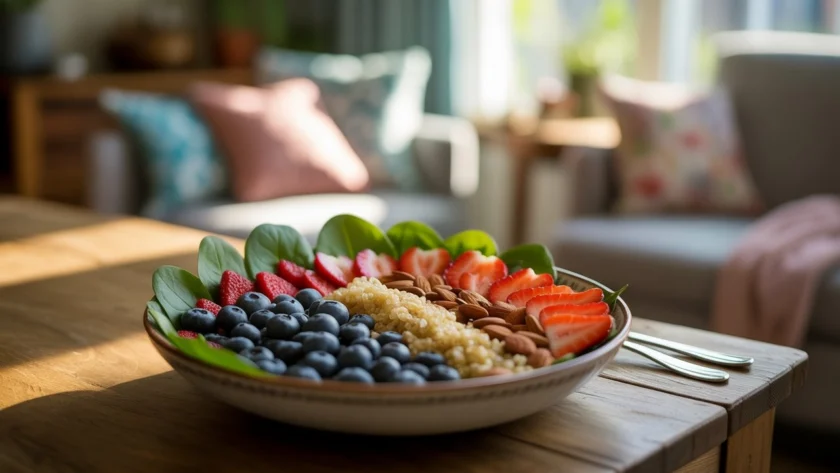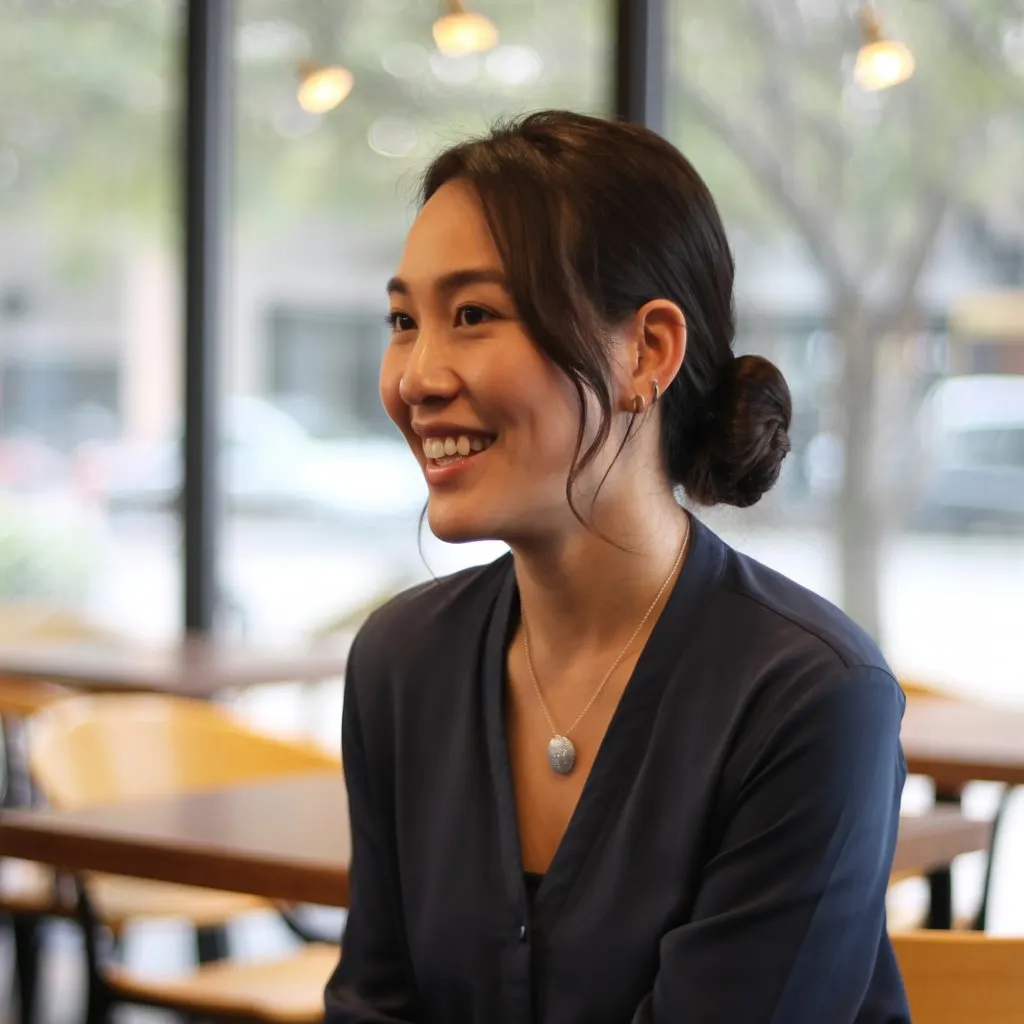Here’s what I’ve come to understand after years of walking this journey with GAD: what we put into our bodies has a profound impact on our mental and emotional well-being. It’s not just about calories or nutrition labels—it’s about recognizing that God designed our bodies as interconnected systems where physical health and emotional peace are beautifully woven together.
If you’re struggling with the constant worry, racing thoughts, and that underlying sense of dread that comes with generalized anxiety disorder, I want to share something that might surprise you. The relationship between diet and GAD symptoms is more significant than many of us realize, and making thoughtful changes to what we eat can be one of the most accessible tools in our anxiety management toolkit.
Understanding the Diet-Anxiety Connection
When I first learned that my morning coffee habit might be contributing to my afternoon panic attacks, I’ll admit I was skeptical. How could something as simple as food affect the complex tangle of anxious thoughts in my mind? But as I dove deeper into understanding both the science and the spiritual aspects of caring for our bodies, a clearer picture emerged.
Our brains require a steady supply of nutrients to produce the neurotransmitters that regulate our mood and anxiety levels. When we’re dealing with GAD, our nervous systems are already working overtime, and certain foods can either support that delicate balance or throw it further into chaos.
I’ve found that thinking of our bodies as temples—as Scripture reminds us in 1 Corinthians 6:19—helps frame this conversation not as vanity or perfection-seeking, but as stewardship. We’re called to care for these incredible bodies God has given us, and that includes being mindful of how our food choices affect our ability to experience His peace.
The connection between what we eat and how we feel isn’t just in our heads. Research shows that about 90% of our body’s serotonin—that feel-good neurotransmitter—is actually produced in our gut. When I learned this, it was like a light bulb went off. No wonder those nights of stress-eating ice cream left me feeling more anxious the next day, not less.
Foods That Can Worsen GAD Symptoms
Let me share some hard-won wisdom about foods that I’ve learned to approach with caution during my anxiety recovery journey. This isn’t about creating a list of “forbidden” foods that will send you into guilt spirals—God’s grace covers our imperfect eating habits just like everything else. Instead, think of this as information that can help you make choices that support your healing.
Caffeine: The Double-Edged Stimulant
Oh, caffeine. We have such a complicated relationship, don’t we? I used to think my morning coffee was essential for functioning, but I discovered it was actually ramping up my anxiety before I even left the house. Caffeine mimics many of the physical symptoms of anxiety: increased heart rate, jitters, sweating, and that “wired but tired” feeling.
For those of us with GAD, our nervous systems are already hypersensitive. Adding caffeine is like pouring gasoline on an already flickering flame. I’m not saying you have to give up your morning ritual entirely—I know how precious that quiet time with your coffee can be. But consider gradually reducing your intake or switching to green tea, which provides a gentler energy boost along with calming L-theanine.
Sugar Crashes and Anxiety Spikes
Here’s something I wish I’d understood earlier: those afternoon anxiety attacks weren’t random. They often followed my blood sugar crashes after eating sugary snacks or refined carbohydrates. When we consume foods high in sugar, our blood glucose levels spike rapidly, then plummet just as quickly. Our bodies interpret this crash as a threat, triggering the release of stress hormones like cortisol and adrenaline.
I remember sitting in my car after lunch, heart pounding and feeling like I couldn’t catch my breath, wondering why anxiety was hitting me so hard. It took time to connect the dots between the pastry I’d grabbed for breakfast and the panic I felt hours later.
Processed Foods and Artificial Additives
Those convenience foods that promise to make life easier? They often make anxiety harder to manage. Processed foods are typically loaded with artificial colors, preservatives, and flavor enhancers that can disrupt our brain chemistry. Monosodium glutamate (MSG), artificial sweeteners, and certain food dyes have all been linked to increased anxiety symptoms in sensitive individuals.
I’ve found that when I’m going through particularly stressful seasons, my body becomes even more sensitive to these additives. It’s as if my already-taxed nervous system can’t handle the extra chemical burden.
Alcohol: The False Comfort
This one’s tricky because alcohol initially seems to calm anxiety symptoms. Many of us with GAD have reached for a glass of wine to “take the edge off” after a difficult day. But alcohol is ultimately a depressant that disrupts sleep quality and can worsen anxiety symptoms as it metabolizes.
I learned this lesson the hard way during a season when I was using evening wine as a coping mechanism. While it provided temporary relief, I consistently felt more anxious the following days. Alcohol interferes with our brain’s natural ability to regulate neurotransmitters, and for those of us already struggling with that balance, it creates more problems than it solves.
Nourishing Foods That Support Anxiety Recovery
Now for the encouraging part—there are so many delicious, nourishing foods that can actually support our journey toward greater peace and emotional stability. When I shifted my focus from what I couldn’t eat to all the amazing foods that could help me feel better, mealtime became less about restriction and more about self-care.
Omega-3 Rich Foods: Brain Food at Its Finest
Fatty fish like salmon, mackerel, and sardines have become some of my closest allies in managing GAD symptoms. Omega-3 fatty acids are essential for brain health and have been shown to reduce inflammation throughout the body, including in the brain. When I consistently include these foods in my diet, I notice I’m better able to handle stress and my mood feels more stable.
If you’re not a fan of fish, don’t worry—walnuts, chia seeds, and flaxseeds are excellent plant-based sources of omega-3s. I often sprinkle ground flaxseed into my morning smoothie or oatmeal. It’s a simple way to support brain health without dramatically changing your eating habits.
Complex Carbohydrates: Steady Energy for Anxious Minds
Contrary to what we might think, carbohydrates aren’t the enemy when it comes to anxiety. Complex carbohydrates found in whole grains, sweet potatoes, and legumes provide steady glucose to the brain and help in the production of serotonin. The key is choosing the right kinds of carbs.
I’ve found that starting my day with steel-cut oats topped with berries and nuts gives me sustained energy without the blood sugar roller coaster. When my glucose levels are stable, my mood is more stable too.
Magnesium-Rich Foods: Nature’s Relaxation Mineral
Magnesium is often called nature’s relaxation mineral, and for good reason. This essential nutrient helps regulate our nervous system and has a naturally calming effect on both body and mind. Dark leafy greens, avocados, nuts, seeds, and dark chocolate (yes, really!) are all excellent sources.
I keep pumpkin seeds in my desk drawer for anxious afternoons—they’re packed with magnesium and make for a much better snack choice than the vending machine options that used to call my name.
Probiotic Foods: Supporting Your Second Brain
Remember how I mentioned that most of our serotonin is produced in our gut? Supporting our digestive health with probiotic-rich foods like yogurt, kefir, sauerkraut, and kimchi can have a positive impact on our mood and anxiety levels.
I started incorporating a small serving of Greek yogurt with berries into my daily routine, and while it wasn’t a magic cure, I noticed improved digestive health and felt more emotionally balanced over time.
Antioxidant-Rich Foods: Fighting Stress from the Inside Out
Berries, leafy greens, and colorful vegetables are packed with antioxidants that help our bodies manage the physical stress that comes with chronic anxiety. These foods help reduce inflammation and support our bodies’ natural ability to cope with stress.
I try to make my plates as colorful as possible—not for Instagram photos, but because those vibrant colors usually indicate nutrient density that supports both physical and mental health.
Practical Meal Planning for GAD Management
Let me share some real-world strategies that have helped me and many others create sustainable eating habits that support anxiety recovery. The goal isn’t perfection—it’s progress and self-compassion.
Start Your Day with Intention
Instead of rushing out the door with just coffee, try beginning your day with a balanced breakfast that includes protein, healthy fats, and complex carbohydrates. One of my go-to combinations is scrambled eggs with avocado on whole grain toast, or a smoothie with spinach, berries, Greek yogurt, and a tablespoon of almond butter.
This isn’t just about nutrition—there’s something spiritually grounding about taking time to nourish our bodies first thing in the morning. It’s a way of saying, “God, I’m going to care for this body You’ve given me today.”
Plan for Anxious Moments
We all have those times when anxiety spikes and we need something comforting. Instead of reaching for foods that might worsen our symptoms later, keep anxiety-friendly snacks readily available. Some of my favorites include:
- Apple slices with almond butter
- A small handful of walnuts
- Herbal tea with a piece of dark chocolate
- Greek yogurt with berries
- Homemade trail mix with nuts and seeds
The Power of Routine
Having consistent meal times can help regulate our body’s natural rhythms, which in turn supports better mood stability. I know this sounds simple, but when we’re dealing with GAD, our eating patterns often become erratic. We skip meals when anxiety kills our appetite, then overeat when stress triggers emotional eating.
Creating gentle structure around meals—even if it’s just setting phone reminders to eat lunch—can provide the stability our anxious minds crave.
Hydration Matters More Than We Think
Dehydration, even mild dehydration, can worsen anxiety symptoms and make us feel more irritable and unfocused. I keep a water bottle with me throughout the day and often add slices of lemon or cucumber to make it more appealing.
Sometimes when I think I’m hungry or experiencing anxiety symptoms, I’m actually just thirsty. Our bodies are remarkably interconnected, and something as simple as proper hydration can make a noticeable difference in how we feel.
Sample Daily Meal Plans for Anxiety Support
Here are some practical meal ideas that incorporate anxiety-supporting foods while still being delicious and satisfying:
Calming Start Monday:
- Breakfast: Overnight oats with chia seeds, berries, and a drizzle of honey
- Snack: Green tea with a small piece of dark chocolate
- Lunch: Salmon salad with mixed greens, avocado, and pumpkin seeds
- Snack: Greek yogurt with walnuts
- Dinner: Baked sweet potato topped with black beans and sautéed spinach
Steady Energy Tuesday:
- Breakfast: Scrambled eggs with spinach and whole grain toast
- Snack: Apple slices with almond butter
- Lunch: Quinoa bowl with roasted vegetables and chickpeas
- Snack: Herbal tea with a handful of berries
- Dinner: Grilled chicken with roasted Brussels sprouts and brown rice
The key is finding what works for your lifestyle, preferences, and budget. These are starting points, not rigid rules.
The Spiritual Dimension of Nourishing Our Bodies
As people of faith, we have a unique perspective on caring for our bodies. We’re not just biological machines—we’re beloved children of God, fearfully and wonderfully made. When we choose foods that support our mental health, we’re participating in God’s design for holistic well-being.
I’ve found that praying over my meals, even briefly, helps me stay connected to the spiritual aspect of nourishment. It’s not about being legalistic or feeling guilty about imperfect food choices. Instead, it’s about recognizing that caring for our bodies is an act of worship and stewardship.
Sometimes I’ll pray something simple like, “God, thank You for this food. Help it nourish my body and support the peace You want me to experience today.” This practice has helped me develop a healthier relationship with food—one based on gratitude rather than fear or guilt.
Making Sustainable Changes Without Overwhelm
Here’s what I wish someone had told me when I first started connecting diet and anxiety: don’t try to change everything at once. When we’re already dealing with GAD, adding the stress of a complete dietary overhaul often does more harm than good.
Start with one small change and give yourself time to adjust. Maybe it’s switching your afternoon soda for herbal tea, or adding a handful of berries to your morning routine. Small, consistent changes compound over time and are much more sustainable than dramatic overhauls.
Be patient with yourself during this process. Some days you’ll make choices that support your anxiety recovery, and other days you’ll reach for comfort foods that might not be ideal. That’s not failure—that’s being human. God’s grace covers our imperfect attempts at self-care just like everything else in our lives.
Finding Hope in Holistic Healing
As we wrap up this conversation, I want to leave you with hope. The relationship between diet and GAD symptoms is real and significant, but it’s also manageable. You don’t have to navigate this alone, and you don’t have to be perfect.
Every small step you take toward nourishing your body is a step toward the peace God desires for you. Whether it’s choosing a calming herbal tea instead of that third cup of coffee, or including more omega-3 rich foods in your weekly meal plan, you’re cooperating with God’s design for your well-being.
Remember that dietary changes are just one tool in your anxiety management toolkit. Continue working with healthcare providers, engage in spiritual practices that bring you peace, maintain supportive relationships, and be patient with the healing process.
Your journey with GAD is unique, and your path to healing will be unique too. Trust that God is with you in this process, working through every avenue of healing—including the foods you choose to nourish His temple that is your body.
The impact of diet on generalized anxiety disorder symptoms is both scientifically supported and spiritually significant. By choosing foods that support our mental health and avoiding those that worsen our symptoms, we’re taking an active role in our healing journey. This isn’t about perfection or adding more stress to our lives—it’s about gentle, sustainable changes that support the peace and wholeness God desires for each of us.
Take it one meal, one day, one choice at a time. You’re not just feeding your body—you’re nurturing hope, supporting healing, and participating in God’s good design for your well-being.




